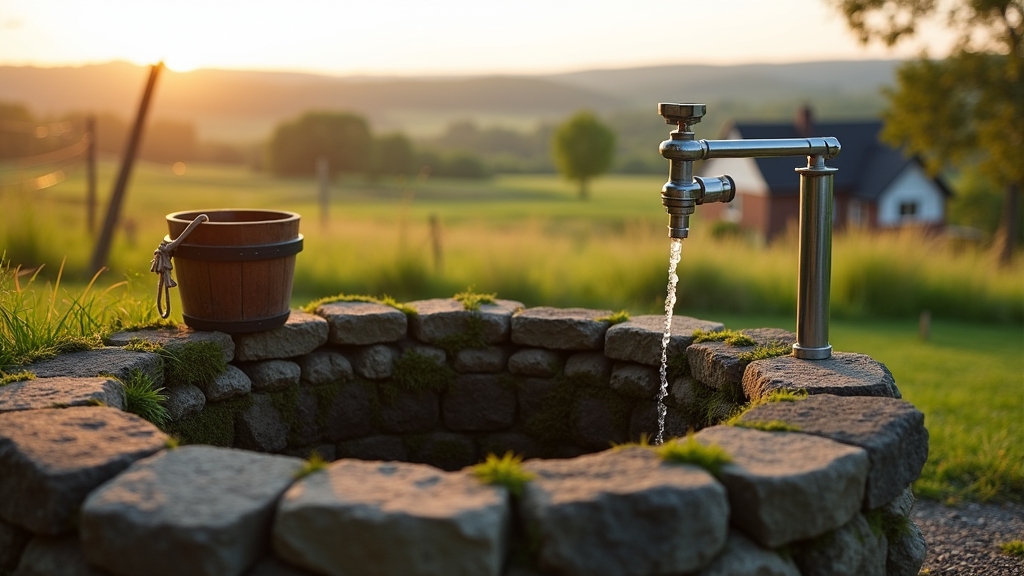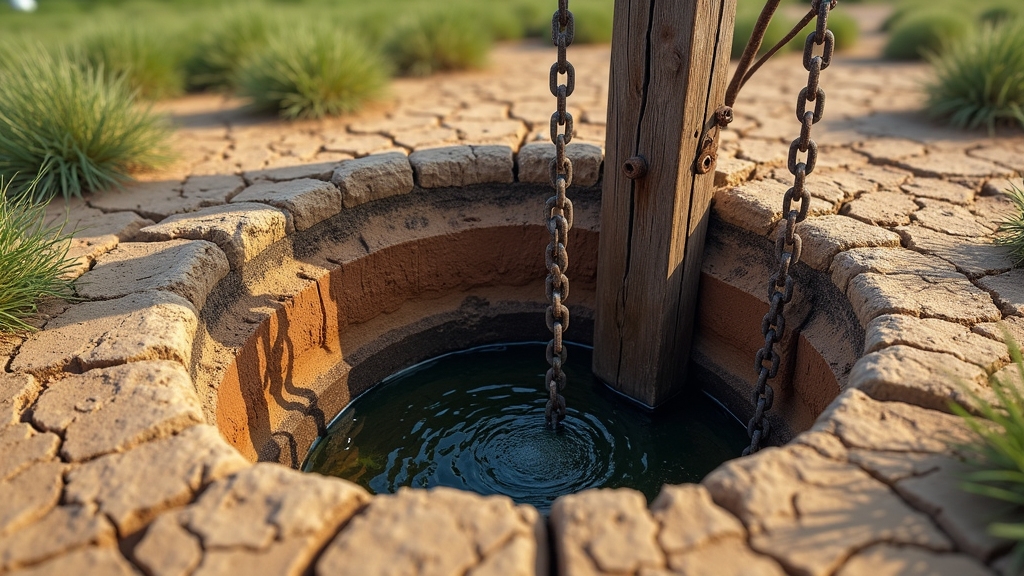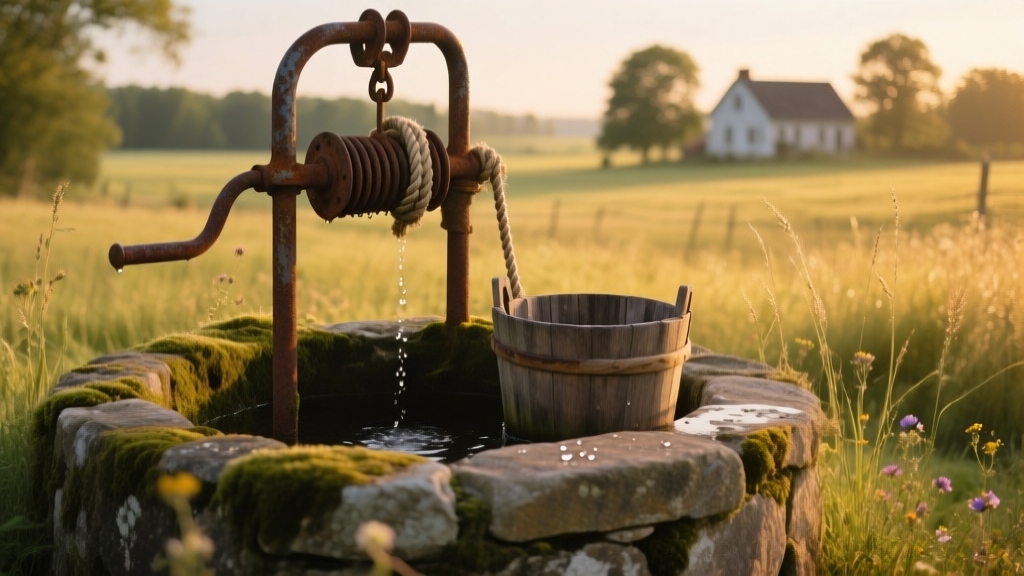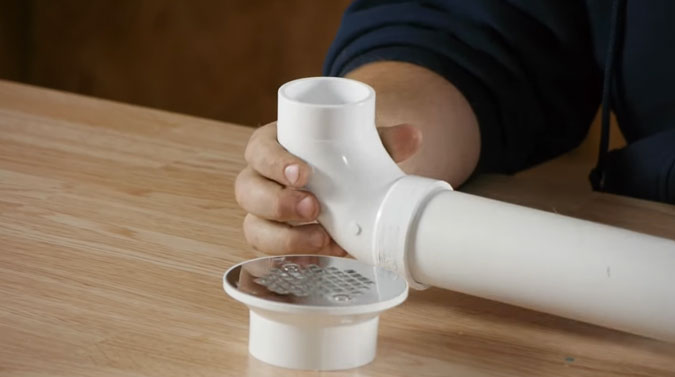Water wells commonly last between 15 and 50 years, depending on their type and construction. Dug wells wear out faster, lasting about 10 to 25 years, while drilled wells can endure longer, typically 30 to 50 years, especially when made with quality materials like stainless steel casings.
Maintenance plays a key role in extending well life. Regular inspections and water quality testing help prevent early failure caused by corrosion, sediment buildup, or contamination. Environmental factors and well design also influence longevity.
Understanding these technical details enables you to manage your well effectively and maximize its service life.
Key Takeaways
- Dug wells typically last 10-25 years, while drilled wells can last 30-50 years or more with proper maintenance.
- Well lifespan depends on construction materials, with stainless steel casings offering superior durability and corrosion resistance.
- Environmental factors like groundwater chemistry, soil type, and aquifer recharge rates significantly influence well longevity.
- Regular maintenance, including inspections and water quality testing, extends the functional life of water wells.
- Well components such as pumps usually last 8-15 years and require timely replacement to maintain system performance.
Typical Lifespan of Different Types of Water Wells

Although water wells vary considerably in design and construction, their lifespans primarily depend on well type and maintenance practices. Dug wells, shallow and prone to contamination, typically last 10 to 25 years and require frequent cleaning and sealing to mitigate environmental exposure.
Drilled wells, constructed with deep boreholes and modern casings, offer superior durability, lasting 30 to 50 years or more, potentially reaching 75 years with ideal maintenance. For example, stainless steel casings can significantly extend well life, reducing maintenance frequency and improving long-term value through a life-cycle cost perspective.
Driven point wells, used in shallow groundwater settings, last around 15 to 25 years but face risks from contamination and mechanical damage. Artesian wells, tapping confined aquifers through deep drilling, have lifespans comparable to drilled wells. They benefit from pressurized flow that may reduce pump wear.
Materials and Construction Quality Impacting Well Durability
The lifespan of a water well doesn’t rely solely on its type or maintenance; the materials used and their construction quality play a significant role in durability. Steel casing, particularly stainless steel, offers superior corrosion resistance and mechanical strength, reducing microbial scale buildup and structural failures under subterranean stress.
Low carbon steel, while cost-effective, corrodes faster, shortening well life. For shallow wells, non-ferrous materials like PVC or fiberglass mitigate corrosion but face mechanical limitations in deep or large-diameter applications. Modern thermoplastics, compliant with ASTM standards, provide consistent wall thickness and impact resistance, enhancing service life.
Additionally, ensuring a clean workspace during installation and maintenance minimizes contamination and damage to well components. Proper welding and installation techniques maintain structural integrity, ensuring resilience against earth movements.
Additionally, proper well construction, including casing, sealing, and grouting, is crucial for durability and preventing contamination. Advancements in materials and construction methods directly extend well durability by minimizing fouling, corrosion, and mechanical degradation.
Role of Maintenance in Extending Well Service Life
Because water wells operate in complex underground environments, regular maintenance plays a critical role in preserving their functionality and extending their service life. You should schedule annual professional inspections to evaluate the well pump, motor, electrical components, and water levels.
Additionally, conducting water quality tests for bacteria, nitrates, pH, and total dissolved solids is essential. Ensuring that the pump and pressure system are functioning properly helps maintain consistent water delivery. Monthly visual inspections help you detect casing damage, leaks, or contamination risks early.
Monitoring water levels and flow rates enables you to identify declining yields indicative of aging or damage, allowing timely intervention. Ensuring that the well cap is sanitary and securely attached prevents insects and rodents from entering and contaminating the well.
Maintaining a secure, debris-free wellhead area with proper drainage minimizes contamination threats. Detailed record-keeping of inspections, testing, repairs, and site management supports ongoing performance assessment and regulatory compliance, ultimately maximizing the well’s operational longevity.
Addressing issues such as leaking pipes promptly helps maintain optimal pressure and system efficiency.
Lifespan of Key Well Components and Replacement Intervals
When you evaluate a water well’s longevity, understanding the lifespan and replacement intervals of its key components is essential. Well pumps generally last 8–15 years, influenced by cycling frequency and material quality.
The duty cycle frequency is the most significant factor affecting pump wear and longevity. Well screens vary by material, with stainless steel outperforming steel and PVC in durability. Valves and fittings associated with water systems should be regularly inspected to prevent pressure-related failures.
Casings, often made of steel or PVC, endure 30–50 years but depend heavily on environmental conditions. Motor components like bearings and capacitors require attention every 10–25 years. Regular inspections and maintenance optimize these intervals.
| Component | Typical Lifespan | Key Replacement Factor |
|---|---|---|
| Well Pump | 8–15 years | Pump cycling frequency |
| Well Casing | 30–50 years | Corrosion or structural damage |
| Motor Bearings | Approximately 25,000 hours | Lubrication and usage |
Environmental and Geological Factors Affecting Well Longevity

You need to contemplate how aquifer characteristics impact well performance, as variations in permeability and recharge rates directly influence water availability and pump stress. Proper maintenance, including adjusting the water pressure regulator, can help mitigate pump stress and prolong well life.
Groundwater chemistry plays a critical role, with high acidity or salinity accelerating corrosion and reducing equipment lifespan. Additionally, soil and rock types affect structural integrity and sediment infiltration, which can cause clogging and mechanical wear over time.
Nearby construction activities can disrupt groundwater flow and introduce debris or chemicals into the well system, increasing the risk of contamination and damage from construction.
Aquifer Characteristics Impact
Although aquifer characteristics vary widely, they fundamentally determine how long a water well remains productive. You need to assess aquifer type, recharge rates, and geological stability to predict well longevity accurately.
Hard rock aquifers depend on fissure connectivity, causing variable yields, while sand and gravel formations offer steadier flows but may shift over time. Proper construction quality including casing and grouting is essential to ensure well durability and prevent premature failure.
Regular maintenance to address issues like sediment buildup can also significantly extend well life. Key factors include:
- Aquifer porosity and permeability: These control water replenishment and sustainable yield.
- Water table fluctuations: Seasonal or long-term changes affect pump workload and well structural integrity.
- Soil and geological stability: Surrounding soil composition influences casing durability and sediment buildup risks.
Understanding these elements helps you optimize well design, anticipate maintenance needs, and extend operational lifespan under varying environmental conditions.
Groundwater Chemistry Effects
Since groundwater chemistry directly interacts with well materials, understanding these chemical dynamics is essential for predicting well longevity. You must consider ion concentrations, such as Na+, Ca2+, and Mg2+, that influence corrosion and scaling on casings and screens.
In particular, the presence of high salinity groundwater can lead to increased levels of Na and Cl ions, which exacerbate mineralogical and structural changes in materials. pH and redox conditions affect mineral solubility and corrosion rates; acidic or alkaline water accelerates metal degradation.
Contaminants like heavy metals and organics promote mineral precipitation and biofilm formation, which clog wells and reduce efficiency. Employing chlorine injection systems can mitigate some microbial growth and help maintain well performance.
Additionally, ion exchange and evaporite dissolution alter groundwater chemistry, further impacting material stability. These chemical processes collectively dictate maintenance frequency and structural integrity.
To maximize well lifespan, you should regularly monitor groundwater chemistry, addressing fluctuations that trigger scaling, fouling, or corrosion, thereby preventing premature well failure.
Soil and Rock Types
Groundwater chemistry interacts closely with the surrounding soil and rock, influencing well performance and durability. Different soil types impose distinct challenges and benefits on well longevity.
Clay soils, for example, retain moisture and promote corrosion, while sandy soils allow rapid water flow but increase sediment infiltration. Sandy soil’s higher sediment risk entering the well can affect water quality significantly.
Sandy soils also require careful consideration of water efficiency to prevent excessive sediment disturbance. Rocky soils offer stability but require specialized drilling, and loamy soils provide balanced conditions.
Key considerations include:
- Clay’s low permeability restricts water flow and increases maintenance due to clogging.
- Sandy soils demand frequent cleaning to manage sediment but facilitate easier drilling.
- Rocky formations yield stable, clean water but risk structural damage during installation.
Economic Considerations in Well Construction and Replacement
When planning your well, consider that construction material costs vary considerably, with premium casings like stainless steel raising upfront expenses but extending lifespan and reducing long-term costs.
Replacement expenses, including re-drilling and pump installation, can be substantial, especially if the original well deteriorates prematurely. Choosing the right pump type, such as a sump pump or ejector pump, can impact both installation and maintenance costs.
Additionally, abandonment costs—required to properly seal and decommission old wells—add to the total economic burden you must evaluate. A typical well’s equipment has a lifespan of 20–30 years, so regular maintenance and timely replacements are essential to avoid unexpected high costs.
Construction Material Costs
Several key factors influence construction material costs in well installation and replacement, shaping your project’s overall economic feasibility. Material choice directly impacts both upfront expenses and long-term viability. Choosing durable materials like PVC or steel casings affects maintenance frequency and repair costs over time.
For example, stainless steel casing demands higher initial investment but reduces lifecycle costs through enhanced durability. Additionally, well depth and type alter material requirements and costs, while supplementary components add to the total financial outlay.
Consider these critical cost drivers:
- Casing material: PVC ($6–$10/ft), low carbon steel ($20–$75/ft), stainless steel (higher upfront, but $12.4M total over 75 years)
- Well depth and type: deeper or irrigation wells increase casing quantity and strength needs
- Ancillary materials: screens, seals, and pumps elevate initial costs but prolong well life
Note that final cost depends on several variables including feet drilled, casing used, and water quantity, which can significantly influence the total expenses. Understanding these variables helps optimize your budget without compromising longevity.
Replacement and Abandonment Expenses
Although well construction involves significant upfront costs, you must also account for replacement and abandonment expenses to fully understand your well’s economic lifespan.
Pump replacements typically cost between $975 and $1,897, varying with pump type and well depth, and occur every 10 to 15 years due to wear. Repair costs range from $150 to over $1,500, influencing decisions on whether to repair or replace pumps.
Choosing the right pump type, such as a submersible pump, can affect both initial and replacement expenses due to its reliability and quieter operation. Installing a battery backup system can help ensure continued pump operation during power outages, potentially extending the effective lifespan of the pump.
Additionally, well abandonment requires professional sealing to prevent contamination, with costs from several hundred to a few thousand dollars depending on complexity and local regulations.
Factoring these expenses alongside initial installation and maintenance helps you optimize the well’s lifecycle cost, ensuring compliance and avoiding unexpected financial liabilities while maintaining reliable water supply over 15 to 30+ years.
Effects of Community Management on Well Functionality
Because community management directly influences both water quantity and quality, its effects on well functionality are critical to understand.
When you engage in community-based monitoring, you effectively reduce groundwater extraction, preserving aquifer levels and extending well lifespan. This is particularly important in regions experiencing pronounced dry seasons, where water scarcity challenges are more acute.
Additionally, regular water quality assessments help detect contamination early, maintaining safe water and preventing system abandonment. Community satisfaction also plays a pivotal role, as higher approval ratings correlate with sustained operation and prompt issue reporting. Key impacts include:
- Regulated water extraction through indirect monitoring methods, like electricity usage analysis.
- Improved water quality via regular, professional testing, reducing bacterial contamination.
- Enhanced user satisfaction, reinforcing collective responsibility and proactive maintenance.
These factors collectively sustain well functionality, emphasizing the necessity of structured, participatory water management frameworks.
Common Causes Leading to Premature Well Failure
When relying on a water well, understanding the causes of premature failure is crucial for proper maintenance. Key factors include overpumping, sediment buildup, chemical incrustation, and structural issues.
Overpumping depletes the aquifer, lowers water yield, and speeds up clogging of the well. Sediment can physically block screens, reducing flow and increasing pump strain. Chemical and biological deposits narrow passages, decreasing efficiency.
A common result of these issues is a decline in well yield, which can signal more severe problems if left unaddressed. Structural deficiencies, such as leaks or weak materials, can lead to contamination and well failure. Recognizing these causes helps you predict well lifespan and prevent unexpected breakdowns.
Strategies for Preventive Maintenance and Well Redevelopment
Addressing the causes of premature well failure requires a structured approach to maintenance and redevelopment. You should implement a thorough plan that includes professional inspections, routine testing, and systematic cleaning.
Key strategies include:
- Annual Professional Inspections: Engage qualified experts for six-point inspections covering bacteria presence, flow rates, pressure systems, piping, and pump performance. Maintain detailed logs to track well condition trends. It is also essential to ensure that well components such as the wellhead and casing are in good condition to prevent contamination.
- Routine Water Quality and Flow Testing: Schedule regular tests for contaminants like coliform and E. coli, monitor pH and TDS levels, and promptly address any water quality changes to prevent deterioration.
- Well Redevelopment and Chemical Treatments: Conduct mechanical cleaning every 7–10 years using airlifting and pump removal, followed by chemical disinfection to remove deposits and biofilms, ensuring restored flow and water safety.
Frequently Asked Questions
How Does Water Well Depth Affect Water Quality Over Time?
You’ll find that deeper wells generally provide more stable, higher-quality water over time because natural filtration reduces contaminants and slower aquifer movement dilutes pollutants. In contrast, shallow wells face rapid, seasonal fluctuations and greater exposure to surface contaminants, increasing risks of corrosive water and contamination spikes.
Understanding well depth helps you anticipate water quality changes, guiding maintenance and treatment decisions to guarantee consistent, safe water supplies throughout the well’s lifespan.
What Are the Typical Signs a Well Needs Immediate Repair?
You need immediate well repair if you notice persistent low water pressure, sudden pressure drops, or continuous pump cycling. Watch for changes in water quality like sediment, discoloration, foul odors, or bubbles indicating contamination or leaks.
Mechanical warnings include unusual pump noises, leaking near the pump, or sputtering taps. Also, if the pump runs without producing water or power consumption spikes, these signal critical failures requiring prompt professional attention to prevent system damage or health risks.
Can Water Wells Be Relocated or Reused in a New Location?
You can relocate a wellhead near its original site by modifying the casing pipe, but moving the entire well bore isn’t practical due to fixed groundwater sources. Reusing wells at or near the original location is possible after thorough inspection, cleaning, and compliance with regulations.
Keep in mind, relocation or reuse requires professional expertise, permits, and water quality testing to guarantee system integrity and safety in the new position or application.
How Do Seasonal Changes Impact Well Water Availability?
Imagine your well’s water level rising like a swollen river in spring, then receding like a drying creek during summer droughts. Seasonal changes impact well water availability by fluctuating the water table. Rainfall and snowmelt recharge it, while heat and high demand deplete it.
Dry, hot months stress your well, reducing yield and increasing the risk of contamination. You’ll need to monitor levels closely and adjust usage to sustain your supply effectively.
What Safety Precautions Are Recommended During Well Drilling?
You should begin by identifying all underground utilities through your state’s one-call center and verifying electrical circuit locations. Inspect rig electrical systems for grounding and proper function. Maintain safe distances from overhead power lines, following OSHA guidelines.
Use correctly sized drill tools and monitor drilling pressures continuously. Wear PPE like goggles, respiratory masks, and gloves. Secure drill bits and workpieces firmly. Employ careful manual excavation techniques to avoid utility damage and comply with safety regulations.
Smart Management Tips to Make Your Well Last Longer
You can expect a well-built water well to last decades, but without proper maintenance, it might fail faster than a candle in a hurricane. Materials, construction quality, and environmental conditions all play critical roles in longevity.
Regular inspections and timely component replacements are essential to extend service life and avoid costly overhauls. By understanding these factors and implementing preventive strategies, you’ll maximize your well’s functionality and safeguard your water supply efficiently and economically.


